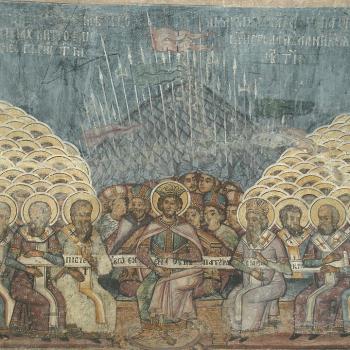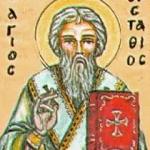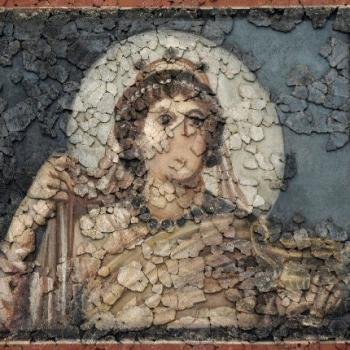I am currently in the process of finalizing revisions of my book, Cultural Christians in the Early Church, under contract at Zondervan. The story that is the subject of this essay is a theory that ultimately got cut from the book, because there simply is not enough evidence to prove it with certainty. It is, nevertheless, a thought-provoking exercise. Put simply, I think that it is possible that Lydia, whom we meet in Acts 16, played a role in bringing the gospel to the Roman province of Bithynia. The key, I believe, is her work as a well-connected trader.
The story of all Christian communities begins with the cross and its witnesses in 33 CE. And the story of Acts, which puts the Holy Spirit as the central character of the narrative, shows just how fast the message spread across parts of the Roman Empire, and how intricate the networks of sharing the gospel could be. Beyond that, however, reconstructing the history of specific churches is not always possible. As it happens, however, during Paul’s second missionary journey, dated ca. 50 CE, we get a particular mention of Bithynia. That reference, along with an intriguing and seemingly unrelated story that follows, provides us with intriguing bread crumbs to present a possible reconstruction of the events that led to the rise of the first Christian community in the Roman province of Bithynia.
Around 50 CE, Paul and Silas, only recently joined by Timothy as well, have been having a productive trip, taking news from Jerusalem to churches in several provinces of the region of Asia Minor (modern-day Turkey), and encouraging them. Acts emphasizes that these churches were thriving, and growing rapidly. The trip seemed to be going quite smoothly (indeed, Paul had not been arrested or beaten in quite a while!), gradually moving northwards in the direction of the Black Sea until the Holy Spirit ordered an unexpected redirection:
“Paul and his companions traveled throughout the region of Phrygia and Galatia, having been kept by the Holy Spirit from preaching the word in the province of Asia. When they came to the border of Mysia, they tried to enter Bithynia, but the Spirit of Jesus would not allow them to. So they passed by Mysia and went down to Troas. During the night Paul had a vision of a man of Macedonia standing and begging him, ‘Come over to Macedonia and help us’” (Acts 16:6-9, all translations from NIV).
Before we mine this passage for information, an important reminder is in order. Unless you are blessed with astounding knowledge of ancient geography, the best way to read Acts is with a map of the Roman Empire. Locations mattered to the early Christians reading and hearing Acts, and they should matter to us.
A particularly helpful option is to use an interactive map, such as Stanford University’s ORBIS Geospatial Network Model of the Roman Empire. Why? Drawing on thousands of data points from Roman source material, ORBIS is able to calculate the duration and cost of trips from various locations across the empire, taking into account both the means of transport and types of road used, and the season of the journey—winter travel by sea, in particular, was slow, dangerous, and largely not attempted. Exceptions, as Paul’s difficult winter-time sea voyage to Rome at the end of Acts shows, were liable not to end well.
In the case of Paul’s second missionary journey, described in Acts 16, a general look at the map shows us that Paul and his companions have been traveling throughout an inland area, slowly moving northward. Since on-land travel was much slower (and, usually, more expensive) than sailing along the coast, these travels would have taken a while. For example, ORBIS estimates that traveling by the shortest route from Perge in Lycia to Nicomedia in Bithynia would have taken 36.8 days even during the best traveling days of summer. But Paul and his companions were not, of course, simply traveling as fast as they could go, or by the shortest possible route. On each stop, they likely spent several days or weeks, visiting churches, teaching and encouraging. The visit at Lystra alone, where Paul and Silas ultimately picked up Timothy, must have taken weeks.
At any rate, going on to Bithynia would indeed have been a logical next step after visiting churches around Lycia and Galatia, as Bithynia-Pontus was the province immediately bordering Galatia to the north. Bithynia had, of course, the added attraction of not yet having a Christian presence, as far as we know. And had they gone into Bithynia, the provincial capital of Nicomedia would have been a strong candidate for visiting and spreading the gospel. While Nicomedia was certainly no Rome, it was a large center with a religiously and ethnically diverse population—just the kind of city where, experience already showed Paul, he could proclaim the good news and find ears eager to receive the message. But that, of course, is not what happened.
As Acts tells us, this trip was filled with specific commands from the Holy Spirit about where Paul and his team could or could not go to teach. Early on, they received a message ordering them not to teach in Asia, the province right on the east coast of the Aegean Sea, separating it from mainland Greece. And after traveling through the inland portions of the region, they received a command not to continue north into Bithynia. The decision to go to Troas, a sea port in Asia, indicates the team’s intention to sail elsewhere, as they had exhausted their options in the immediate region.
Troas, incidentally, was by this point in the Roman Empire a tourist destination for those eager to relive the myths of the Trojan War at the original location of Troy. There is a certain irony that surely was not lost on the original audiences of Acts, of an apostle of Christ and his companions traveling to Troas, and receiving a divine message there about their next destination.
Troas was known to the pagan tourists as the place to see divine visions, as Tony Perrottet reminds in his hilariously readable yet highly erudite book on Roman tourism, Pagan Holiday: On the Trail of Ancient Roman Tourists: “Specters of the heroes might be encountered at night, illuminated by flashes of lightning; even at noon, the clash of arms could be heard…” as the ghosts of Greek and Trojan soldiers kept re-fighting their old battles on the dusty plains of what used to be Troy. Indeed, the locals even used the appearance of the ghosts to predict weather—dusty ghosts fighting meant a drought, whereas extra bloody ones meant rain. But we digress.
If Paul was annoyed or perplexed over the repeated messages forbidding him to go first to Asia, and then to Bithynia, Acts tactfully does not tell. But he presumably was overjoyed to get a clear command at this point: a vision of a man of Macedonia, asking him to come and help. And although we cannot absolutely prove it, going to Macedonia may have directly led to the arrival of the gospel in Bithynia.
The journey from Troas across the Aegean to Macedonia would not have taken long—ORBIS estimates just 3.1 days for a trip from Troas to Philippi in mid-summer. Why Philippi? Acts notes that it was “a leading city of the district of Macedonia and a Roman colony” (Acts 16:12). Yet again, Paul chooses to travel to the most diverse urban areas to preach. And in the very next section of Acts 16, we get a curious story about what happened once Paul and his companions arrived at Philippi:
“On the Sabbath we went outside the city gate to the river, where we expected to find a place of prayer. We sat down and began to speak to the women who had gathered there. One of those listening was a woman from the city of Thyatira named Lydia, a dealer in purple cloth. She was a worshiper of God. The Lord opened her heart to respond to Paul’s message” (Acts 16:13-14).

The conversion of Lydia is spectacular for many reasons, but one reason that is often overlooked is geography. Not for every convert do we get the level of detail that we do about Lydia, so it is worth considering just why we need these specifics about where she is from, and what she does for a living. Yes, her hometown of Thyatira will become a significant enough church to be included as one of the seven churches in Revelation, but there is an added significance in this immediate context, in describing Lydia as the very first convert in Philippi.
It is no coincidence that right after the Holy Spirit expressly forbade Paul to go into Bithynia, and asked him to go to Macedonia, Paul’s and Lydia’s paths crossed. Thyatira, a popular trade center known especially for the very trade that Lydia was plying—selling purple goods—was located in the province of Asia (where the Holy Spirit did not allow Paul to go to preach), just nine days from Nicomedia, the provincial capital of Bithynia (where Paul also was not allowed to go), and less than a week from the edge of the province. On a side note, Roman historian Sarah Bond has written a fascinating article on Lydia and the trade in purple, explaining the significance of this trade, and the possible negative implications of this work for Lydia’s own reputation.
But what is important for the story at hand is this: as a merchant, Lydia and her representatives had to travel on a regular basis. While she owned a home in Philippi, to which she subsequently invited Paul to stay while he was in the area, she surely maintained connections to Asia, which is why her hometown is mentioned by name. Her trading connections had to have taken her, furthermore, to other provincial centers, and as history has shown time and time again, trade routes have for millennia facilitated the spread of ideas, as well as goods and, occasionally, plagues as well.
Lydia’s strong faith is presented clearly in this passage. Although a gentile, she was already a worshiper of God when she met Paul. Once converted through the action of the Holy Spirit, she clearly became an invaluable member of the church in Philippi. It seems plausible, furthermore, that she may have played a role in planting a church in Thyatira, and through her trade travels, brought the gospel into Bithynia as well either herself or through her trade contacts.
The placement of her story immediately following Paul’s prohibition from traveling into Bithynia is suggestive evidence in favor of this theory as well. Of course, we cannot prove any of this absolutely. But whether through the direct actions of Lydia or not, Christianity arrived in Bithynia sometime in the 50s CE. We know this because the epistle 1 Peter, written ca. 62-63 CE, continues the story of the Bithynian church, together with the other Christian communities in that region of the empire. But to read my take on that particular story, you will have to wait for the book.


















